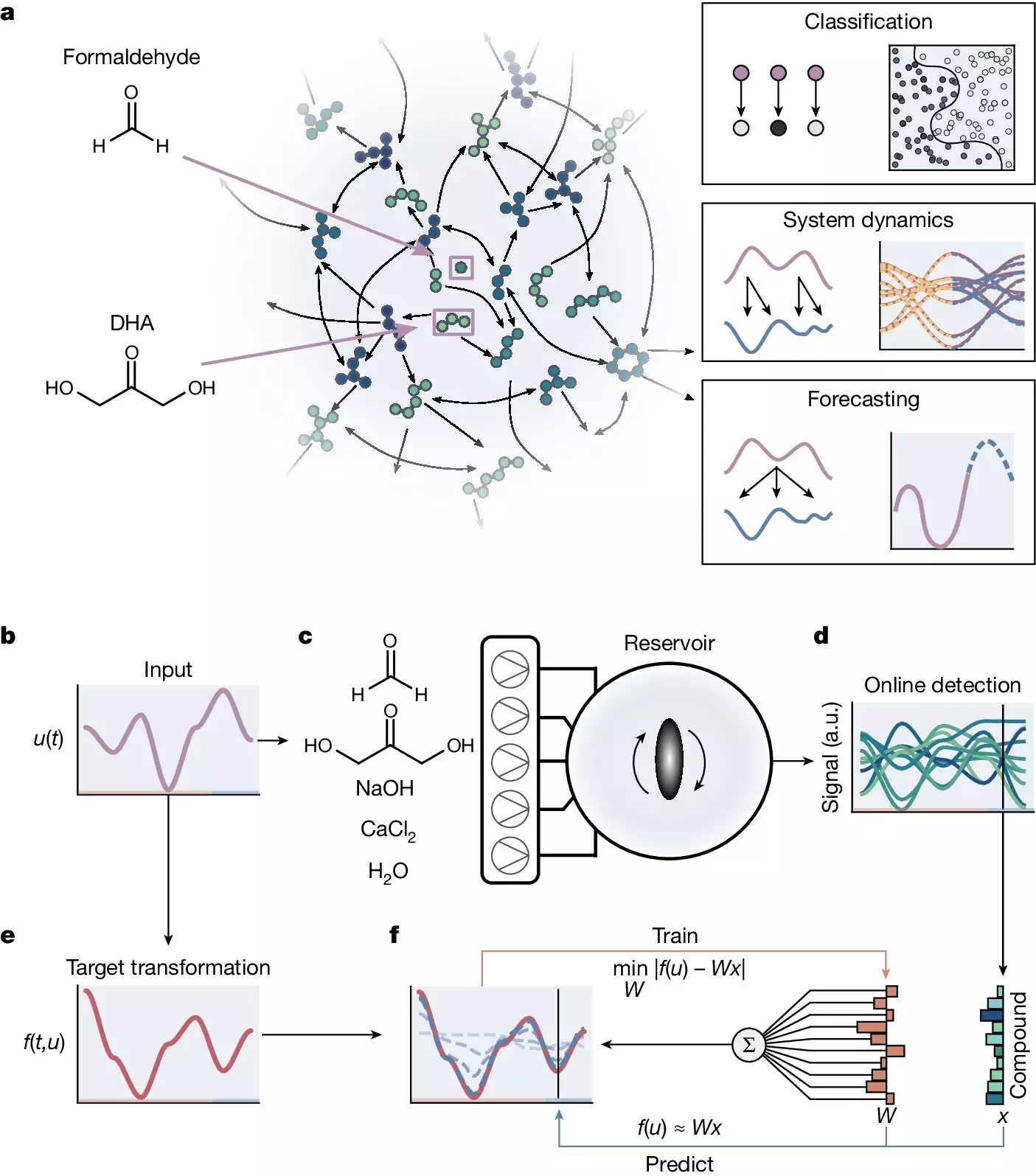In a groundbreaking study conducted by researchers at the Institute for Molecules and Materials at Radboud University in the Netherlands, the potential of complex self-organizing chemical reaction networks to perform various computational tasks has been revealed. This research, led by Prof. Wilhelm Huck, delves into the realm of molecular computing, where chemical and biological systems act as reservoir computers to transform inputs into high-dimensional outputs. The team’s approach challenges the traditional method of engineering molecular systems for specific computational tasks, instead focusing on the emergent properties of naturally complex chemical systems.
One of the key chemical reactions explored in this study is the formose reaction, known for its unique properties that set it apart from linear reaction sequences. This reaction network exhibits a highly non-linear topology, containing positive and negative feedback loops that result in the production of multiple intermediate compounds. These dynamic reactions lead to the emergence of diverse chemical species, showcasing the non-linear nature of the system. The self-organizing nature of the network allows it to evolve and react to chemical inputs autonomously, generating a wide range of outputs without external programming.
To implement the formose reaction for computational purposes, the researchers utilized a continuous stirred tank reactor (CSTR). By controlling the input concentrations of four reactants—formaldehyde, dihydroxyacetone, sodium hydroxide, and calcium chloride—the team modulated the behavior of the reaction network. Using a mass spectrometer, the researchers were able to track up to 10^6 molecules and perform calculations by treating the reactant concentrations as input values for specific functions. The training process involved finding a set of weights to convert mass spectrometer traces to the correct computation value, enabling the reservoir computer to predict outcomes for new inputs.
The research team successfully demonstrated the capabilities of the reservoir computer in performing various tasks, including nonlinear classification, emulation of Boolean logic gates, prediction of metabolic network behavior, and forecasting future states of chaotic systems. Moreover, the system exhibited short-term memory in certain chemical species, indicating the retention of past input information. The innovative approach of utilizing colorimetric reactions for chemical readouts eliminates the need for electronic measurement devices, paving the way for autonomous chemical systems with information processing capabilities.
The research conducted by Prof. Huck and his team not only offers insights into the potential of molecular computing but also raises intriguing questions about the origin of life. By studying reservoir computation in chemical systems, researchers aim to bridge the gap between artificial and biological information processing capabilities. The prospect of embedding reservoir computing into chemical systems that can sense, process, and respond to environmental stimuli without external control opens up new possibilities for autonomous chemical systems.
Future Directions and Collaborations in Molecular Computing
Looking ahead, Prof. Huck expressed interest in further exploring the computing power of formose reservoir computers in collaboration with IBM Zurich. The ongoing research on neuromorphic computing, which mimics the neural structure of the human brain, holds promise for improved computational efficiency and energy consumption. By pushing the boundaries of molecular computing, researchers aim to unravel the technological potential of chemical systems and enhance our understanding of information processing mechanisms in living cells.
The innovative approach to molecular computing presented in this study represents a significant step towards unlocking the computational capabilities of chemical systems. By harnessing the inherent properties of complex chemical reactions, researchers are paving the way for autonomous and adaptive information processing systems with diverse applications in science and technology.


Leave a Reply